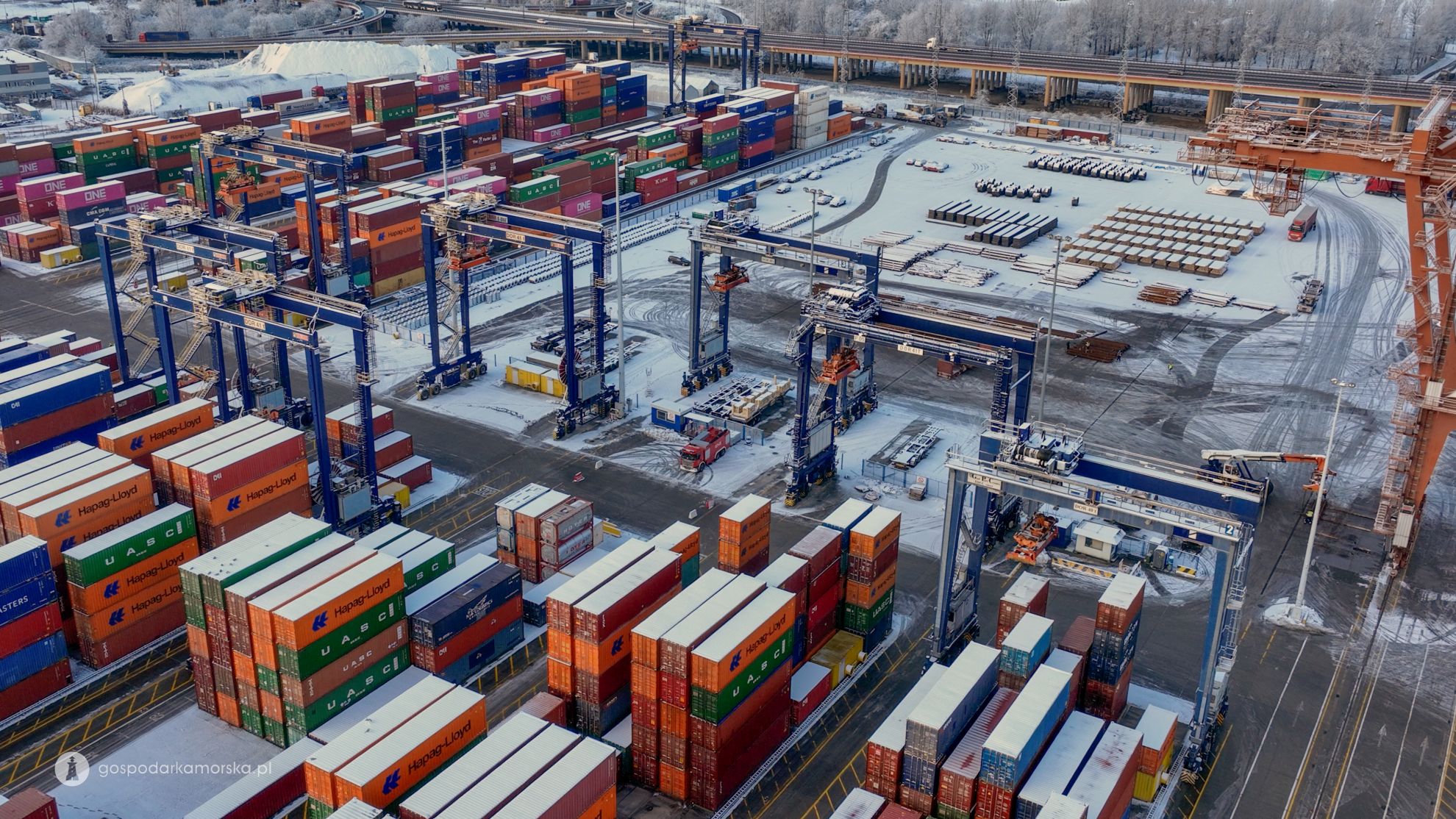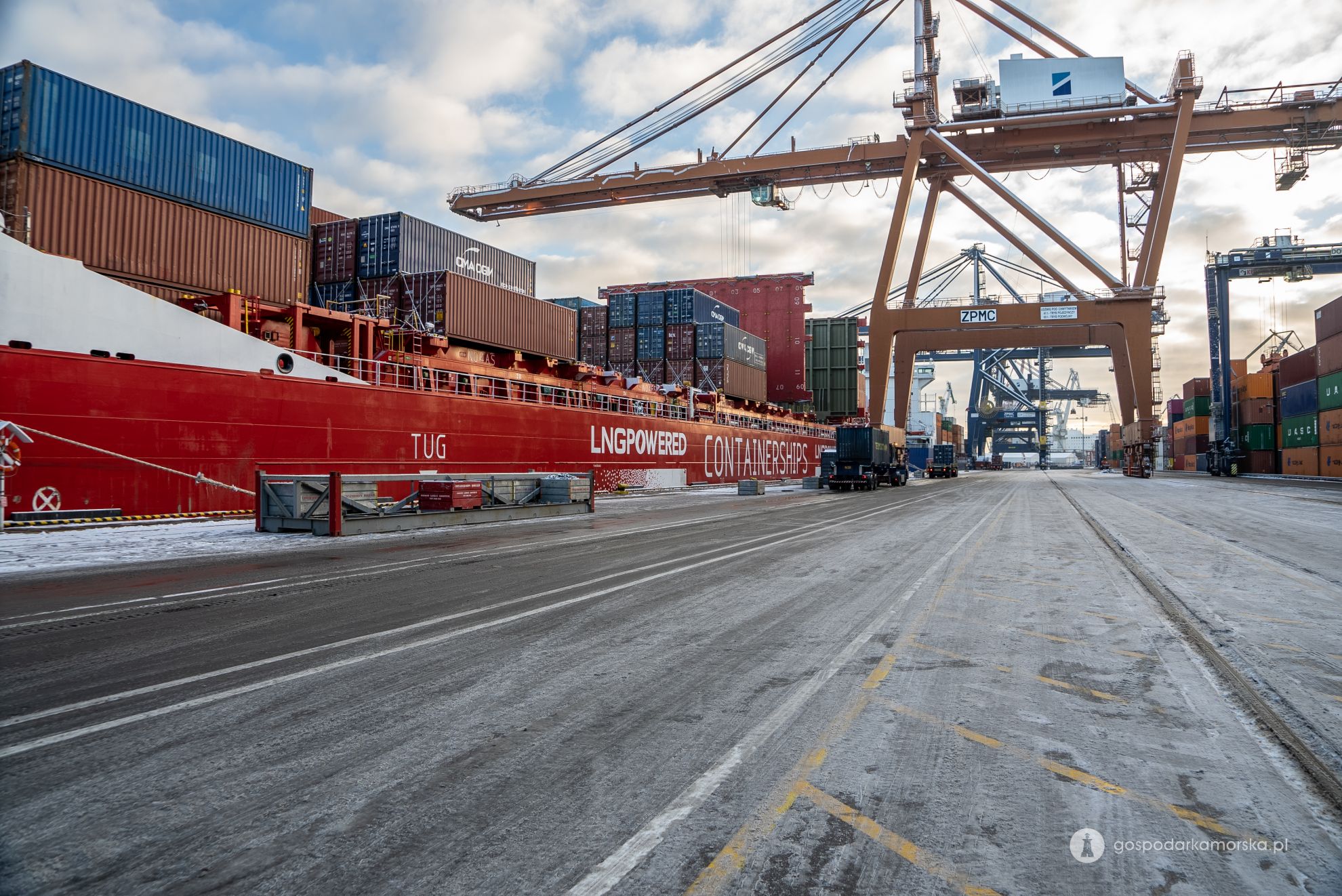
Gdynia Container Terminal, part of the Hutchison Ports Group, continues to invest in order to significantly reduce CO2 emissions during handling operations and thus meet the terminal's environmental targets. A tender was recently launched for the modernisation of seven RTG yard cranes, and GCT's efforts do not stop there.
Gdynia Container Terminal is preparing for important investments to meet the environmental goals of the terminal and the entire Hutchison Ports Group, which has set science-based emissions reduction targets in line with the Science Based Targets initiative (SBTi) criteria and recommendations and committed to reach net-zero value chain greenhouse gas emissions of its ports and terminals by 2050 in line with the SBTi net-zero standard. One of the first activities at GCT terminal is the modernisation of seven diesel-powered RTG yard cranes. A tender to select a contractor for this operation has been launched in January.
- The aim of this tender is to replace the diesel driven cranes with electricity. Thanks to this one project alone, our terminal's diesel consumption during operational work will be reduced by around 45%. This is really a substantial reduction indeed. Thanks to the implementation of this solution, our terminal will already generate significantly less CO2 next year - says Jan Jarmakowski, GCT's Managing Director.
After the upgrade of these seven RTG cranes, all such equipment operating at the yard will be electrified. Seven electrically-powered cranes are already operating at GCT. The first two were purchased back in 2012, while a further five were added over the next three years.
- We already have this technology well mastered and adapted. We have put in the infrastructure to take the next step and switch completely to electric power for the yard cranes - assures Jan Jarmakowski. 'We have received a small amount of EU funding for this project from the Interreg funds for Baltic Sea Region as part of a larger Blue Supply Chains programme executed together with several Baltic ports and in cooperation with the University of Gdansk and Baltic Ports Organization. The aim of our participation in the programme is primarily to spread the idea of modernization of existing, well-functioning handling equipment in ports, towards improving energy efficiency, reducing CO2 emissions and noise emissions. Hopefully, more and more operators will move in a similar direction. Of course, we will be happy to share our experience and knowledge – assures Jan Jarmakowski.

The modernization of the yard cranes will reduce GCT’s scope 1 direct CO2 emissions by approximately 1,700 tones per year, however it is not the only environmentally friendly initiative to be implemented at the terminal in the near future. Just last year, a preliminary analysis has been prepared for the replacement of terminal tractors with electrically powered vehicles. The execution phase has not yet taken place, as GCT is counting on new technologies to come to the market.
- In this area, we would be particularly keen to use hydrogen-based technologies. For equipment that needs to be highly mobile, such as terminal tractors or reachstackers, in our opinion hydrogen is a cleaner source of energy with greater flexibility to our operations. The biggest drawback of electric power is, of course, the need to supply electricity to the equipment via a cable or the time it takes to charge its batteries. We are therefore still waiting to see in which direction the market for terminal equipment manufacturers will go. If the deployment of hydrogen technology is too slow, we will ultimately opt for electrically powered devices - explains Jan Jarmakowski.
It is possible that the vehicles that will appear at GCT will be autonomous. Hutchison Ports Group is already operating such equipment. It is the first in the world to deploy electrically powered autonomous trucks at Hutchison Laem Chabang Terminal D in Thailand. A total of six are in operation there with another batch of nine units under testing now.. A further two units are undergoing intensive testing at the Port of Felixstowe in the UK.
- This technology has been applied to a conventional container terminal such as ours. Autonomous trucks move around the terminal among the external trucks. Artificial intelligence algorithms are therefore already so refined that they are able to manage the movement of these vehicles in an environment of normal traffic at the terminal - describes Jan Jarmakowski and adds that a preliminary analysis of the use of this type of tractor has also been made at GCT, but here too the alternative is to introduce hydrogen-powered equipment.
An important part of decarbonization of global shipping is also reducing the emissions generated by ships at berth in the ports. Two routes are being implemented in parallel. Firstly, more and more ships in ports are using alternative fuels, much more environmentally friendly than conventional heavy fuel oils. LNG-fueled vessels of Containerships line are also appearing regularly at GCT, as we reported in Maritime Economy. Secondly, the terminal is preparing to allow ships using conventional engines to obtain electricity from the quay.
- This year we plan to start work on a feasibility study for an onshore supply project, i.e. powering ships with electricity from the quay. The ship's engine must burn fuel at all times, including when in port, in order to power not only the ship's components, but also, for example, the refrigerated containers which are carried on board. Consequently, ships also use a great deal of fuel while at berth and generate CO2 emissions into the atmosphere. All EU ports will have to prepare solutions to this problem over the next few years. This is a really considerable challenge, even only from the point of view of the infrastructure works that will have to be done to supply such large amounts of connection power to the individual quays. We are in discussions with the electricity suppliers as well as with the engineers who are to prepare the technical solutions. We have also started preliminary discussions with our customers - the shipowners - about the solutions that would need to be applied to their vessels - says Jan Jarmakowski.

All of these measures aim to reduce the emission of CO2 and other pollutants into the atmosphere, thereby reducing the carbon footprint of the terminal and the products it handles.
- It is not only customers who are asking us about our carbon footprint, we are also starting to ask our suppliers about it. This is, of course, due to the fact that many global companies have already analyzed their operations and made commitments to CO2 emissions and carbon footprint reduction in their supply chain and production processes. It is only a matter of time when the products we have on our shelves will have information on the carbon footprint generated during the process involved in producing and delivering that product to the end user - announces Jarmakowski.
Hutchison Ports is the ports and related services division of CK Hutchison Holdings Limited (CK Hutchison). Hutchison Ports is a leading global port investor, developer and operator with operations in 51 ports across 25 countries in Asia, the Middle East, Africa, Europe, the Americas and Australasia. Over the years, Hutchison Ports has expanded into other logistics and transportation-related areas, including cruise ship terminals, , distribution centres, rail services and ship repair yards. In 2021, the terminals owned by Hutchison Ports handled a total of more than 88 million TEUs.
Science Based Targets initiative (SBTi) is a partnership between CDP, United Nations Global Compact, World Resources Institute (WRI) and World Wide Fund for Nature (WWF). SBTi defines and promotes best practice in emissions reductions and net-zero targets in line with the climate science, provides technical assistance and expert resources to companies who set science-based targets in line with the latest climate science and brings together a team of experts to provide companies with independent assessment and validation of targets. The SBTi is the lead partner of the Business Ambition for 1.5°C campaign - an urgent call to action from a global coalition of UN agencies, business and industry leaders, mobilizing companies to set net-zero science-based targets in line with a 1.5°C future.


